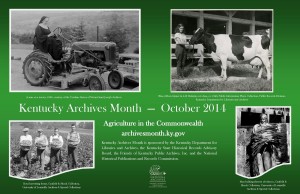A month or so ago a student asked me how to go about becoming an archivist. In constructing my response to him I mentally reviewed my 25+ years in the profession and the changes that have impacted the profession.
Time was most archivists were historians by training. Specialists might also have a degree in another discipline, but by and large we were historians. These days most have a degree in information science with coursework in public history.
What does that mean? Information Science is the new library science and is defined as an interdisciplinary field concerned with the analysis, collection, classification, manipulation, storage, retrieval, movement, dissemination and protection of information. While Public History is usually defined as history beyond the walls of the traditional classroom or applied history. It is most often found in the preservation of historic buildings, creation of museum exhibits and care of public and private records housed in archives.
In the not so distant past archivist’s dealt solely with paper.
- letters written on paper
- photographs printed on paper
- ledgers and account books
- maps drawn or printed on paper
- collection inventories typed on paper
- card catalog indexing systems on paper
These days we are dealing with paper and electronic records of all sorts.
- email created on computers, tablet computer and cellphones
- digital images taken with cameras and cellphones
- spreadsheets
- maps created using CAD or computer-aided design software
- collection inventories transferred from typescripts to electronic documents
- database indexing systems
So the path to the archives is this:
- discipline of your passion
- information science
- passion for providing service to others
- understanding of computer databases
Archives exist everywhere and are about every topic imaginable, not just history. In keeping with the Archives Month theme of agriculture:

